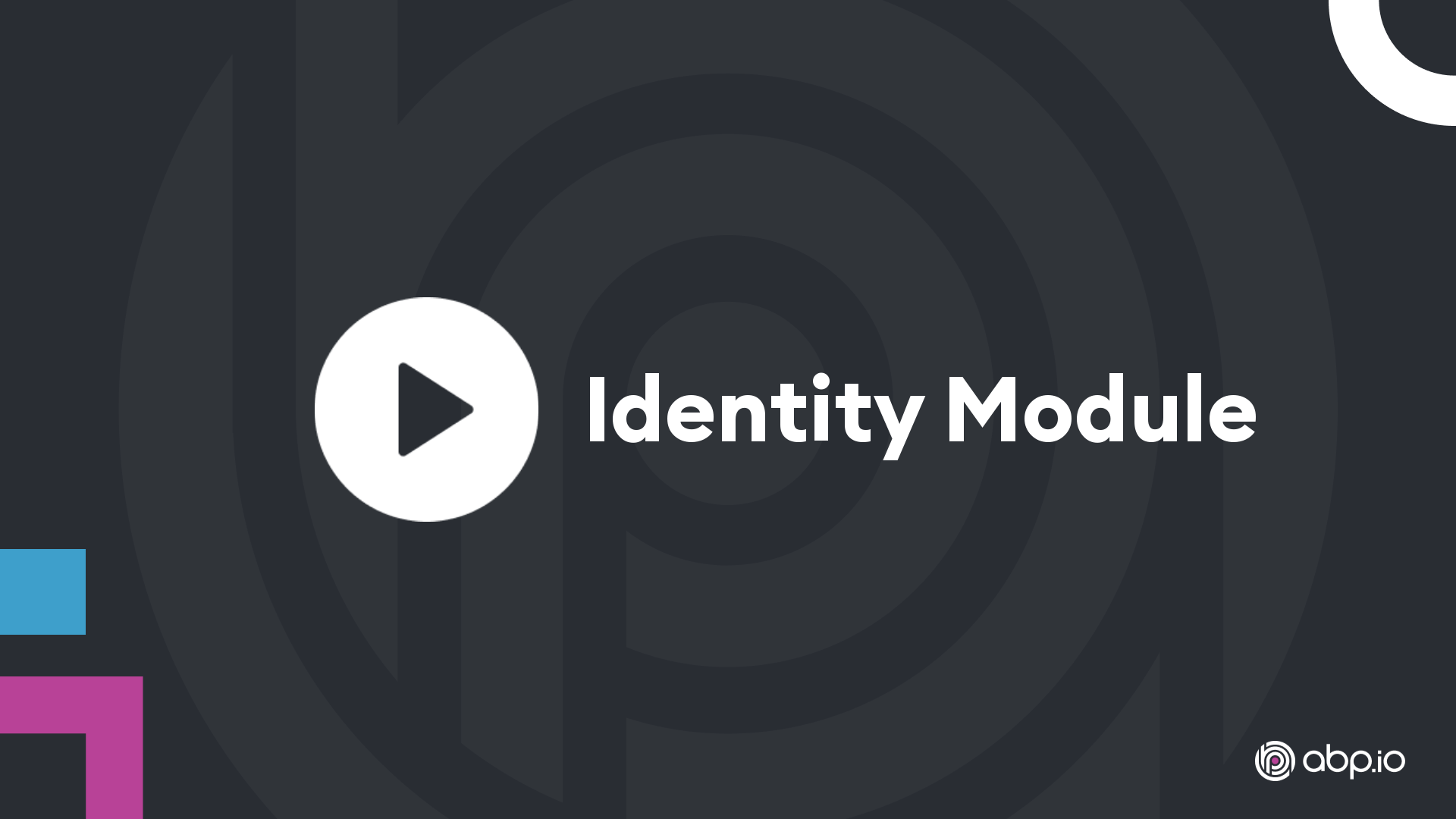Identity
User, role, claims and permission management.
Overview
This module implements the User and Role system of an application;
- Built on the Microsoft's ASP.NET Core Identity library.
- Manage roles and users in the system. A user is allowed to have multiple roles.
- Set permissions in role and user levels.
- Enable/disable two factor authentication and user lockout per user.
- Manage basic user profile and password.
- Manage claim types in the system, set claims to roles and users.
- Setting page to manage password complexity, user sign-in, account and lockout.
- Supports LDAP authentication.
- Supports Periodic Password Change (Password Aging).
- Provides email & phone number verification.
- Supports social login integrations (Twitter, Facebook, GitHub etc...).
- Manage organization units in the system.
- User impersonation feature to allow passwordless login with another user's account.
- Tenant impersonation feature to allow passwordless login as a tenant.
- View security logs (login, logout, change password...) in the system.
- Export & Import users to/from Excel and CSV files (also supports importing external users).
Features
Role Management
Roles page is used to manage roles in the system. A role is a set of permissions assigned to the users.

You can create a new role or edit a role in this page:

- Default roles are assigned to new users by default.
- Public roles are visible to other users.
Role Permissions
You can manage permissions of a role:

- A permission is an action of the application granted to roles and users.
- A user with a role will inherit all the permissions granted for the role.
- Any module can define permissions. Once you define a new permission, it will be available in this page.
- Left side is the list of modules. Once you click to a module name, you can check/uncheck permissions related to that module.
Role Claims
You can set custom claim values for a role:

Claim types are retrieved from the claim list defined in the Claim Types Management page (see below).
User Management
Users page is used to manage the users in your system.

You can create a new user or edit an existing user in this page:

- A user can have zero or more roles in the system.
- You can set two factor verification and user lockout settings per user.
User Permissions
A user has union of the permissions of the assigned roles. Identity module also allows to grant extra permissions to a specific user.

User Claims
You can also set custom claim values for a user:

Claim types are retrieved from the claim list defined in the Claim Type Management page (see below).
Claim Type Management
Identity module allows to define custom claim types.

- Custom claims can be used to store additional information to a user or role.
- Custom claim values then can be accessed in the application code for an authenticated user.
- Claim Types are also used by the Identity Server module if you're using it.
Identity Module Settings UI
Identity module adds a new tab to the Settings page to customize the behavior on runtime.

Organization Units
Organization units page is used to manage organization units, members of organization units and roles of organization units.

You can add a new organization unit or edit an existing organization unit on this page. In order to add a new root organization unit, click "Add root unit" button and fill the opening form.

In order to add a sub-unit to an existing organization unit, right click on an existing organization unit and click "Add sub-unit" context menu item. Similarly, in order to edit an organization unit, right click on an existing organization unit and click "Edit" context menu item.

You can manage members of an organization unit using the members tab by selection an organization unit or by right clicking to an item on the organization unit tree.

You can manage roles of an organization unit using the members tab or by right clicking to an item on the organization unit tree. An organization unit inherits permissions of its roles.

Security Logs UI
Identity module automatically logs all authentication related operations (login, logout, change password...) to the database. Security logs can be viewed in the security logs UI page as shown in the screenshot below;

Also, each user can view security logs for his/her account as shown in the screenshot below;

Organization Units UI
Identity module provides organization unit management UI. An organization units hierarchy can be created using this UI and members (users) can be assigned to organization units as well.


Also, roles can be assigned to organization units. In that case, all users in the specific organization unit is granted with the added role.


